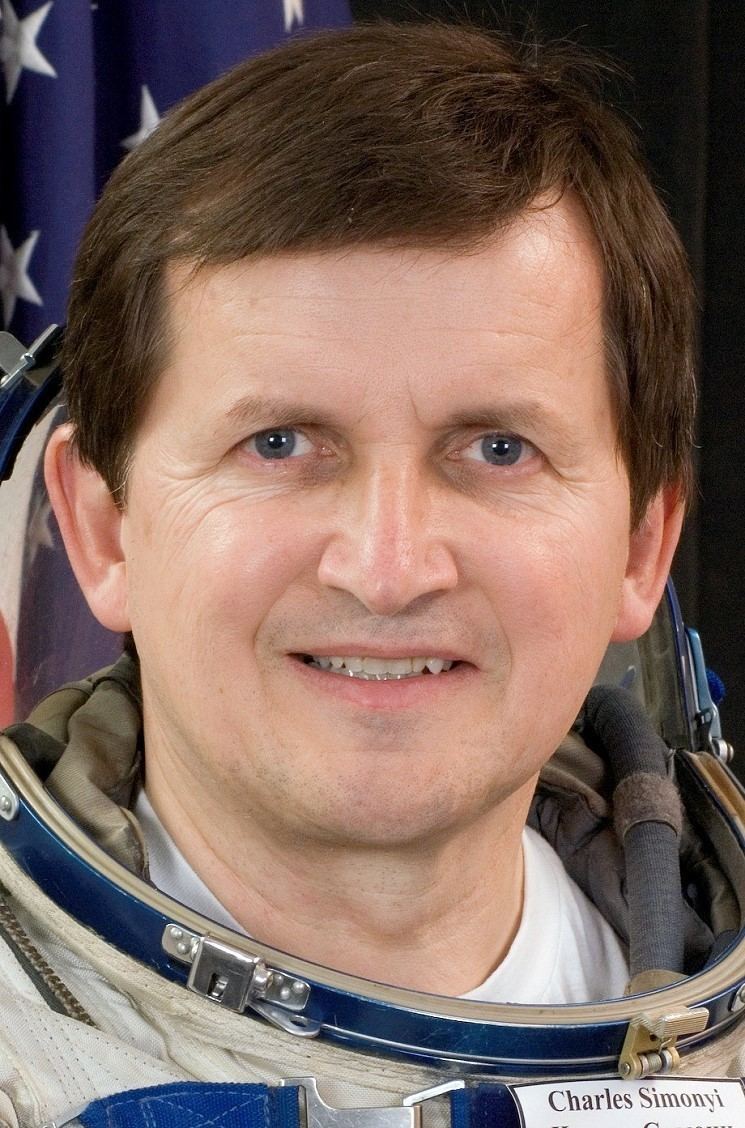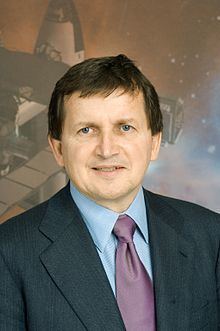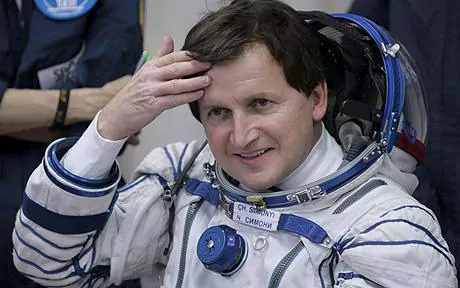Nationality Hungarian Time in space 26d 14h 27m Spouse Lisa Persdotter (m. 2008) Net worth 1.5 billion USD (2015) | Role Computer programmer Citizenship United States Name Charles Simonyi | |
 | ||
Children Lilian Simonyi, Livia Suzanne Simonyi Similar People Lisa Persdotter, Karoly Simonyi, Anousheh Ansari, Michael Barratt, Michael Fincke | ||
The history of microsoft the charles simonyi story part 1 of 2
Charles Simonyi (; Hungarian: Simonyi Károly, [ˈʃimoɲi ˈkaːroj]; born September 10, 1948), son of Károly Simonyi, is a Hungarian-born American computer programmer, businessman, and space tourist. He was head of Microsoft's application software group, where he oversaw the creation of Microsoft's flagship Office suite of applications. He now heads his own company, Intentional Software, with the aim of developing and marketing his concept of intentional programming. In April 2007, aboard Soyuz TMA-10, he became the fifth space tourist and the second Hungarian in space. In March 2009, aboard Soyuz TMA-14, he made a second trip to the International Space Station. His estimated net worth is US$1.4 billion.
Contents
- The history of microsoft the charles simonyi story part 1 of 2
- Stanford engineering hero charles simonyi
- Early life in Hungary
- Denmark and USA
- Microsoft
- Intentional Software
- Patents
- Philanthropy
- Personal life
- Spaceflights
- Radio communication while aboard ISS
- In popular culture
- References

Stanford engineering hero charles simonyi
Early life in Hungary

Simonyi was born in Budapest, Hungary, the son of Károly Simonyi, a professor of electrical engineering at the Technical University of Budapest. While in secondary school he worked part-time as a night watchman at a computer laboratory in early 1960's, overseeing a large Soviet Ural II mainframe. He took an interest in computing and learned to program from one of the laboratory's engineers. By the time he left school, he had learned to develop compilers and sold one of these to a government department. He presented a demonstration of his compiler to the members of a Danish computer trade delegation. In 2006 he said when he was young his dream was, “to get out of Hungary, go to the West and be free.”
Denmark and USA
At the age of 17, Simonyi left Hungary on a short-term visa but did not return. He was hired by Denmark's A/S Regnecentralen in 1966 where he worked with Per Brinch Hansen and Peter Kraft on the RC 4000 minicomputer's Real-time Control System, and with Peter Naur on the GIER ALGOL compiler. He subsequently moved to the United States in 1968 to attend the University of California, Berkeley, where he earned his B.S. in Engineering Mathematics & Statistics in 1972 under Butler Lampson.
Simonyi was recruited to Xerox PARC by Butler Lampson during its most productive period, working alongside luminaries such as Alan Kay, Butler Lampson, and Robert Metcalfe on the development of the Xerox Alto, one of the first personal computers. He and Lampson developed Bravo, the first WYSIWYG document preparation program, which became operational in 1974. During this time he received his Ph.D. in computer science from Stanford University in 1977 with a dissertation on a software project management technique he called meta-programming. This approach sought to defeat Brooks' law by scaling programming through a formalization of communication among programmers. In the 1992 book Accidental Empires (ISBN 0-88730-855-4), Robert X. Cringely gave this description:
"Simonyi's dissertation was an attempt to describe a more efficient method of organizing programmers to write software... the metaprogrammer was the designer, decision maker, and communication controller in a software development group.... individual progammers were allowed to make no design decisions about the project. All they did was write the code as described by the metaprogrammer.... A programmer with a problem or a question would take it to the metaprogrammer, who could come up with an answer or transfer the question to another programmer..."Simonyi remained at PARC until 1981.
Microsoft
In 1981, at Metcalfe's suggestion, he visited Bill Gates at Microsoft who suggested Simonyi start an applications group at Microsoft with the first application being a WYSIWYG word processor. At Microsoft, Simonyi built the organization and applications of what became its most profitable products, Word and Excel, as well as Excel's predecessor Multiplan. For the applications, Simonyi pursued a strategy called the "revenue bomb", whereby the product ran on a virtual machine that was ported to each platform. The resulting applications were highly portable, although Microsoft's focus and IBM's standardization on MS-DOS eventually made portability less important. In a 2002 news item, The Age noted that Simonyi introduced the concept of metaprogramming at Microsoft, turning it into what people sometimes referred to as a software factory, but the metaprogramming concept "did not work out in practice."
Simonyi introduced to Microsoft the techniques of object-oriented programming that he had learned at Xerox. He developed the Hungarian notation convention for naming variables. These standards were originally part of his doctoral thesis. The Hungarian notation has been widely used inside Microsoft.
Intentional Software
Simonyi remained at Microsoft during its rapid rise in the software industry, becoming one of its highest-ranking developers. He left Microsoft in 2002 to co-found, with business partner Gregor Kiczales, a company called Intentional Software. This company markets the intentional programming concepts Simonyi developed at Microsoft Research. In this approach to software, a programmer first builds a language environment specific to a given problem domain (such as life insurance). Domain experts, aided by the programmer, then describe the program's intended behavior in a What You See Is What You Get (WYSIWYG)-like manner. An automated system uses the program description and the language to generate the final program. Successive changes are only done at the WYSIWYG level.
In 2004, Simonyi received the Wharton Infosys Business Transformation Award for the industry-wide impact of his innovative work in information technology.
On April 18, 2017, Intentional Software was acquired by Microsoft.
Patents
Simonyi currently holds 11 patents: US patent 6070007 US patent 6665866 US patent 2001037496 WO patent 2004102380 WO patent 2007053833 WO patent 2007076269 EP patent 1923782 JP patent 2008140410 US patent 2010146377 JP patent 2010146583 US patent 2010229092
Philanthropy
Simonyi has been an active philanthropist.
He has funded the establishment of three professorships:
In January 2004, Simonyi created the Charles Simonyi Fund for Arts and Sciences, through which Simonyi supports Seattle-area arts, science, and educational programs. As of May 2012, the Fund size was $75 million. Grant recipients have included the Seattle Symphony ($10 million), and the Seattle Public Library ($3 million), the Metropolitan Opera and the Juilliard School.
In February 2017, Simonyi gave the University of Washington Computer Science and Engineering (CSE) department $5 million towards the completion of a new building.
Personal life
Simonyi is married to Lisa Persdotter, the daughter of a Swedish millionaire. She is 32 years his junior. They were engaged on 8 August 2008 and were married on 22 November 2008 in a private ceremony in Gothenburg, Sweden, attended by their closest friends, among them Bill Gates. Their first child, a daughter named Lilian Simonyi, was born in February 2011. The second child, Livia Suzanne Simonyi was born in November 2012.
Simonyi gained United States citizenship in 1982.
Simonyi dated Martha Stewart for 15 years until 2008.
Simonyi spends six months per year on his custom-built 233-foot (71 m) long super yacht named Skat.
Simonyi's residence in Medina, Washington, "Villa Simonyi", is a modern house designed by architect Wendell Lovett, where Simonyi displays his collection of paintings by Roy Lichtenstein and Victor Vasarely.
Spaceflights
In early 2006, Simonyi expressed interest in becoming a space tourist and signed agreements with the space tourism company, Space Adventures, Ltd., for a ten-day mission to the International Space Station (ISS).
In August 2006, he passed a pre-qualification medical exam by the Russian Federal Space Agency, called the State Medical Commission (GMK). He started training at Star City in September 2006.
He launched on April 7, 2007 (GMT), on board Soyuz TMA-10. He shared a ride with two Russian cosmonauts to the International Space Station, and returned aboard Soyuz TMA-9, scheduled to depart from the ISS on April 20, 2007.
Upon arrival to the ISS on April 9, 2007 Simonyi said, "It is amazing how it appears from the blackness of the sky. It was very, very dramatic. It was like a big stage set, a fantastic production of some incredible opera or modern play. That's what I was referring to when I said I was blown away."
Simonyi's expected return on April 20, 2007 was delayed by one day due to 'boggy ground'. He returned to Earth on April 21, 2007 along with an American astronaut and a Russian cosmonaut.
In October 2008, he booked for a second trip to the ISS through Space Adventures on board Soyuz TMA-14. On March 26, 2009 he returned to space aboard Soyuz TMA-14. He returned to Earth on board Soyuz TMA-13. Along with Soyuz Commander Yuri Lonchakov and Michael Fincke, Simonyi landed in Kazakhstan on April 8, 2009.
Radio communication while aboard ISS
Charles Simonyi is a licensed amateur radio operator with the call sign KE7KDP, and planned to contact a number of schools while on his flight on the International Space Station using amateur radio for the communication with those schools. On April 11, 2007 the American Radio Relay League reported that Simonyi was already making ham radio contacts from space.
One of the schools Simonyi contacted was Cedar Point Elementary in Bristow, Virginia. A telebridge conversation was held on Tuesday, April 17, 2007. On board with him were Oleg Kotov and Fyodor Yurchikhin. On March 30, 2009 he held a phone conversation with students at the Girls' Middle School in Mountain View, CA, United States in which he said that one of the most surprising things about traveling to space was that upon returning to earth the air feels very thick, very heavy, like "breathing Pepto-Bismol." He also stated that talking with the students from the school "made his day."
Simonyi used his Hungarian call sign HA5SIK when he contacted 25 radio amateurs from Hungary in a record attempt on April 12. He contacted former and current students of Tivadar Puskás Polytechnic, Budapest on April 13.
Simonyi supports The Museum of Flight in Seattle, funding the Space Gallery housing the NASA Shuttle Trainer and many space artifacts.
In popular culture
Simonyi was portrayed by actor Brian Lester in the TV film Pirates of Silicon Valley.
